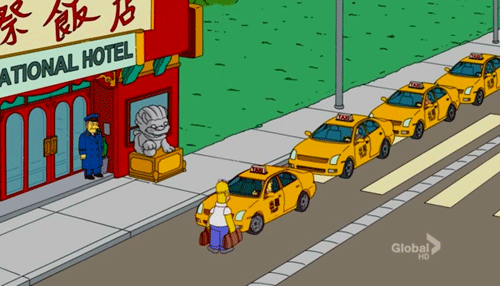Travis Kalanick on The Uber Endgame

Earlier this week, the Awl posited how Uber might metastasize into mass transit and potentially privatize public transit along the way, at least in some cities. That piece found its way into Uber CEO Travis Kalanick’s Facebook Newsfeed, where he commented on the post of the person who shared it; a screencap of his comments was shared with us. We’re presenting it here because even though his comments were made in a limbo between public and private — someone’s Facebook wall — which makes us feel not a little weird to share it, Kalanick is possibly the single most important person in the world with respect to the future of transit, so we think people should be aware of his thinking on the matter:

Points one and two speak for themselves — we agree! although it seems like many people who need public transit but are ill-served by it also probably can’t quite afford Uber yet, either? — but it’s worth looking more closely point three (which our piece didn’t really discuss, but anyway). Kalanick’s point is that Uber pays, on average, four times the taxes that a yellow cab does on a per trip basis. This is a very specific word choice! (The implication though, I believe, is that Uber is in fact better at funding public transit than yellow cabs.) That assertion, which the Uber NYC Twitter account also made a few days ago, is based on two things: a fifty-cent surcharge on every yellow cab ride, and the approximate eight percent sales tax on every Uber trip, which, according to Uber, averages out to two dollars per ride.
Uber riders pay 4X the taxes per ride compared to taxi + have generated ~$40 million in tax revenue so far this year. pic.twitter.com/QlkaLyj4KB
— Uber NYC (@Uber_NYC) August 24, 2015
But let’s break it down more finely. Uber-affiliated cars are classified as for-hire vehicles, which must pay an 8.875 percent sales tax on every ride: 0.375 percent goes to the MTA; 4 percent goes to the state, and 4.5 percent goes to the city. Additionally, for-hire vehicles pay a yearly $400 Commercial Motor Vehicle Tax.
As for yellow cabs, there is 50-cent tax on every trip that goes directly to the MTA — plus an annual $1000 Commercial Motor Vehicle Tax. Green cabs — Boro Taxis that only operate in the outer boroughs and the fringes of Manhattan — split the difference, with the 50 cent MTA tax and an annual $400 CMVT.
The TLC pegs the current number of yellow cabs plus green cabs at 21,639 — of which 13,587 are yellow cabs, which suggests there are 8052 or so green cabs. (The TLC was authorized to license up to 18,000 green cabs at a rate of up to 6,000 per year.) The TLC puts the number of for-hire vehicles — which includes liveries, black cars, and limos — at about 65,754, or roughly three times the size of the combined cab fleet. (Uber has approximately 20,000 cars.) For the calendar year 2015, the TLC is projecting $94.61 million in tax revenue from yellow cabs and $11.48 million from green cabs — $107 million, all told — and $156 million in tax revenue from for-hire vehicles.
In other words, it takes three times the number of for-hire vehicles to produce one-and-half times the tax revenue of cabs. Or, to crudely estimate from these TLC numbers, an average yellow cab brings in $6900 in tax revenue, while an average for-hire vehicle brings in $2372 in tax revenue. (Of course, the easy counter-argument is that there will be — and should be — so many for-hire vehicles making so many trips so efficiently that overall, revenue will grow. And sure, why not?)
But in one sense none of this matters! What’s going to happen next is so predictable it borders on inevitable: In its aggressively matter-of-fact tone, Uber will slowly open up and present its case, increasingly transparently, as the next iteration of mass transit, one that can and will replace much of the transit infrastructure we have now, from taxis to buses. Cities will continue to resort to vague and defensive arguments against that case, and they will probably lose.
